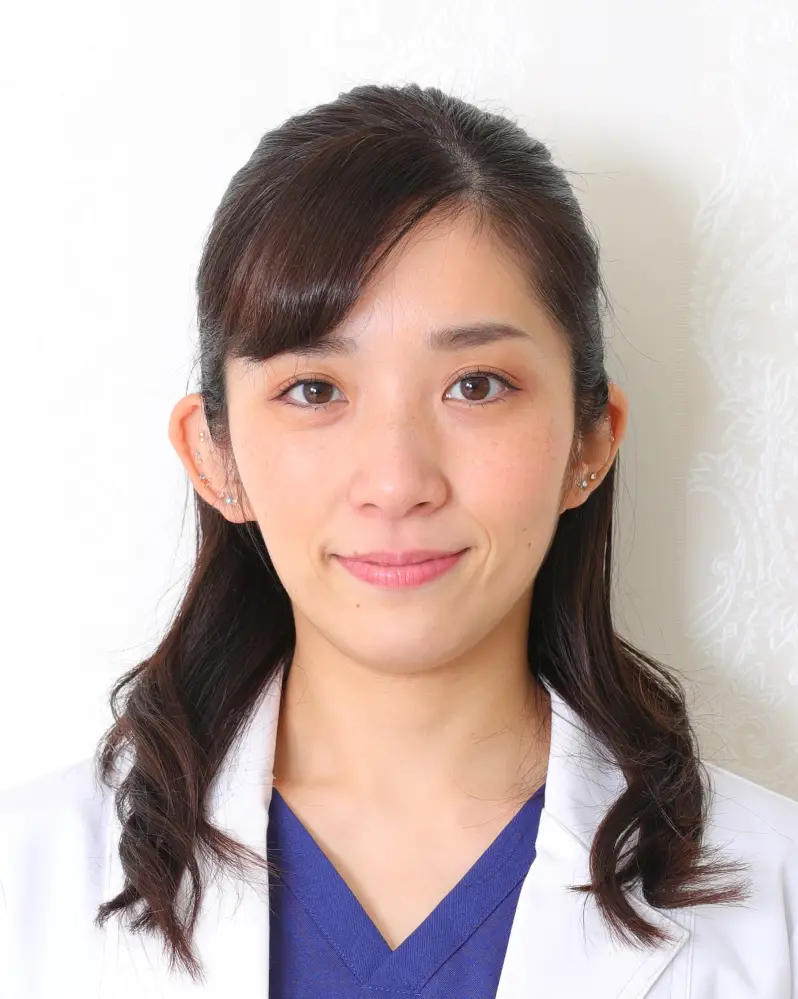Effective Acupressure for TMJ Pain Relief You Can Try at Home
If you’re dealing with temporomandibular joint (TMJ) pain, you know how uncomfortable it can be. The tension and discomfort in the jaw can disrupt daily life, making it hard to eat, speak, or even relax. Fortunately, acupressure for TMJ pain is a natural way to alleviate this discomfort, especially when done correctly during short breaks. We consulted with TCM expert Ms. Mai Sogawa, a Traditional Chinese Medicine (TCM) therapist from Japan, to gather her recommendations on acupressure points for quick TMJ pain relief.
For a deeper dive into how acupressure works, you can explore our comprehensive acupressure guide to learn about the overall benefits and techniques of this ancient practice.
In this article, we’ll share the top four acupressure points that are easy to massage during short breaks, helping you manage TMJ pain efficiently.
What Causes TMJ Pain?
Before diving into the acupressure points, it’s helpful to understand what causes TMJ pain. TMJ disorders often arise from:
- Jaw misalignment
- Teeth grinding or clenching (often due to stress)
- Injury to the jaw
- Arthritis affecting the TMJ joint
TMJ pain can range from mild discomfort to severe tension that affects your jaw, neck, and even your ears. Acupressure is a simple yet effective way to address this pain by targeting specific points along the body’s meridians.
1. Masseter Muscle Point (ST-6)
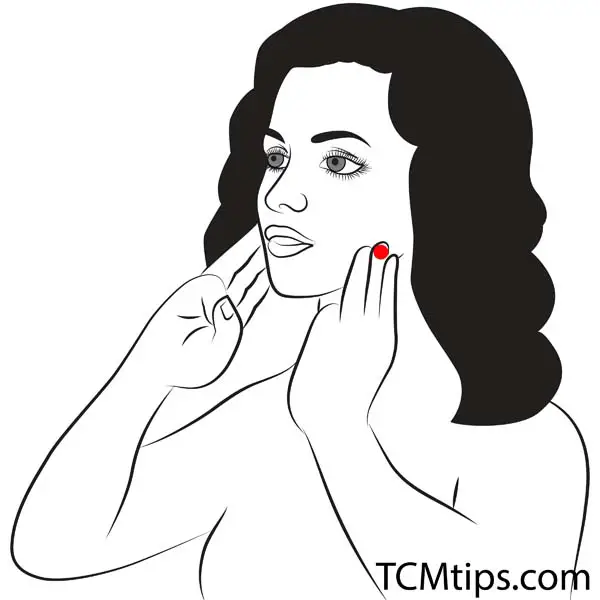
One of the most common acupressure points for TMJ pain is located near the masseter muscle, a primary muscle used for chewing. This point is called ST-6, and it’s situated on the lower corner of your jaw.
How to Locate and Use This Point:
- Place your fingers at the lower edge of your jaw, just beneath your earlobe.
- Apply gentle pressure and massage the area in small circular motions.
- Doing this for 1-2 minutes can help relieve tightness and reduce jaw pain.
According to Ms. Mai, this acupressure point works well for immediate relief, especially when you feel tension building after long hours of clenching or grinding your teeth.
2. Upper Jaw Point (ST-7)
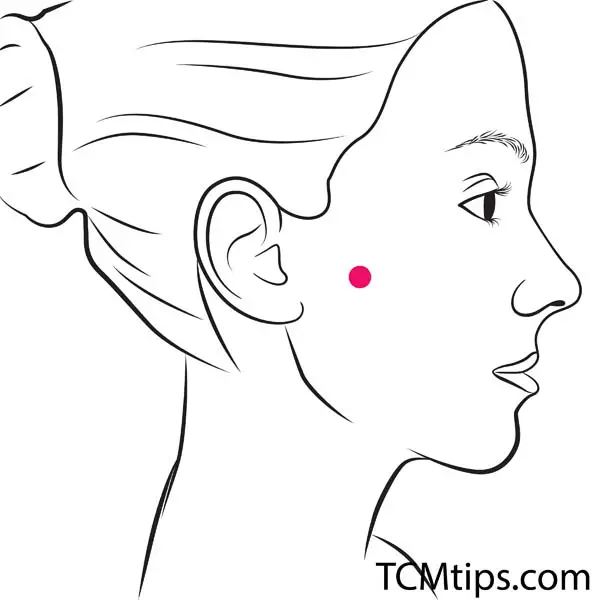
The next key point for TMJ relief is ST-7, located just in front of the ear and slightly above the jaw joint. This point is connected to the upper part of the jaw and can help with reducing overall jaw tension.
How to Locate and Use This Point:
- Find the point just in front of your ear, where the jaw opens and closes.
- Gently press and massage in circular motions for 1-2 minutes.
Ms. Mai highlights that this acupressure point is particularly useful after eating or talking for long periods, as it helps release tightness in the upper jaw area, which is often overlooked.
3. Behind the Ear Point (TE-17)
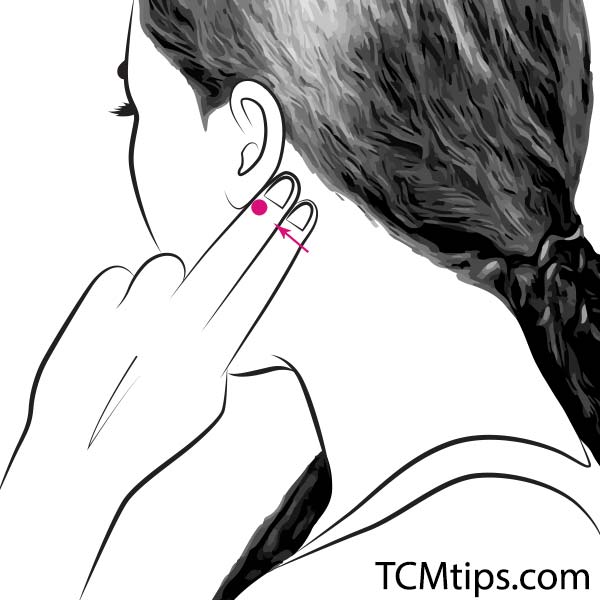
The TE-17 point, also known as the “Wind Screen,” is located behind the earlobe, near the jaw. This acupressure point helps alleviate not only jaw tension but also ear pain, which can sometimes accompany TMJ disorders.
How to Locate and Use This Point:
- Use your fingers to locate the soft area just behind the earlobe.
- Apply firm, yet comfortable pressure, and massage the spot in slow, circular motions for 1-2 minutes.
By stimulating TE-17, you can reduce inflammation around the jaw joint and even alleviate some of the headaches and ear discomfort that often come with TMJ pain. Ms. Mai notes that this point is excellent for targeting multiple symptoms at once.
4. Neck Release Point (SI-17)
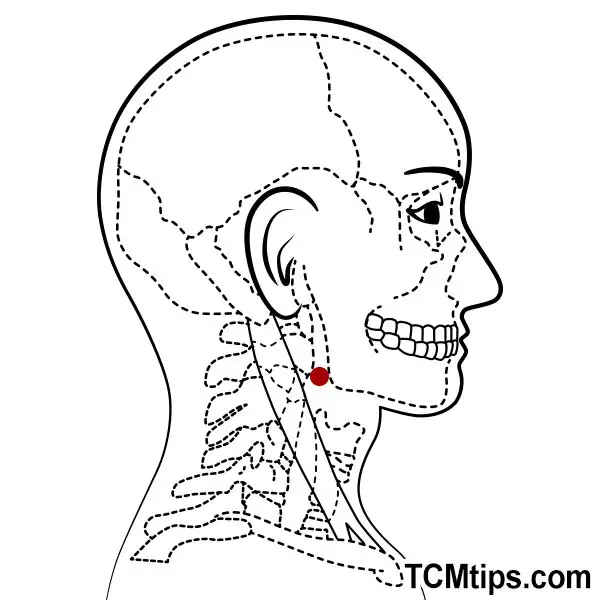
The SI-17 point is located on the side of the neck, just below the jawline. This point not only eases tension in the jaw but also helps release stiffness in the neck, which is often a secondary issue related to TMJ disorders.
How to Locate and Use This Point:
- Find the point on the side of your neck, under the jawbone, where the muscles feel tight.
- Press and massage the area gently for 1-2 minutes.
Ms. Mai explains that tension in the jaw and neck are often connected, and releasing both areas can provide significant relief. Stimulating this point can improve blood circulation to the neck and jaw, helping to reduce inflammation and tension in both areas.
Tips for Practicing Acupressure at Home
Here are a few tips to keep in mind when using acupressure for TMJ pain relief:
- Consistency is key: For best results, massage these points at least once or twice a day, especially during high-stress periods.
- Use gentle pressure: Avoid pressing too hard, as it can cause discomfort. The goal is to stimulate the points, not cause pain.
- Pair with relaxation techniques: Combining acupressure with deep breathing or meditation can enhance the calming effects, helping you relieve tension more effectively.
Additional Considerations
While acupressure is a great way to relieve TMJ pain naturally, it’s important to keep a holistic approach in mind. Addressing stress, posture, and even diet can contribute to better jaw health. For persistent or severe TMJ issues, it’s always recommended to consult a healthcare provider.
If you’re interested in exploring more acupressure techniques, check out our in-depth acupressure guide for a comprehensive overview of the practice’s benefits, methods, and side effects.
Conclusion
TMJ pain can be frustrating, but regular use of acupressure can help you manage symptoms naturally and effectively. By massaging the points recommended by TCM therapist Ms. Mai Sogawa, such as those on the jaw, neck, and around the ears, you can enjoy noticeable relief, even during short breaks.
Acupressure is a simple, non-invasive method that you can easily incorporate into your routine to alleviate TMJ pain and improve your overall well-being.

Try our Anti-Aging Gua Sha Tool designed to bring out your skin’s natural glow.
Best Gua Sha Product- Anti-Aging: The tool is designed to target 11 specific aging signs such as wrinkles and sagging skin. By following the 7-step routine, users can improve skin firmness and reduce fine lines naturally.
- Enhances Skincare Routine: It works effectively with serums and lotions, boosting absorption and efficacy of skincare products.
- Visible Skin Improvement: Users can expect a smoother complexion, reduced puffiness, and a more youthful appearance.
 P. Sze
P. Sze 
